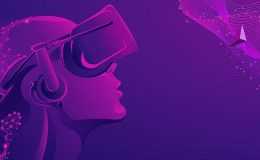

Virtual reality (VR) is a groundbreaking technology that alters perception by replacing an individual’s view with computer-generated images. It has applications in gaming, virtual tourism and other immersive experiences requiring high resolution renderings and low latency video.

AR vs VR vs MR vs XR Differences between the Reality Tech
Augmented reality (AR) and mixed reality (MR) place digital elements on top of a user’s real-world environment. They utilize advanced sensors for room mapping and depth perception, simple gesture recognition, and interactive content.
AR is the visualisation of digital data overlaid on top of a user’s perception of the real world. This may take the form of animations, images, videos and 3D models.
AR uses sensors such as GPS, accelerometers and gyroscopes to precisely map the physical world. Furthermore, SLAM (Simultaneous Localization and Mapping) algorithms are utilized for accurate placement of digital content within its physical context.
In healthcare, surgeons can utilize an augmented reality app to project an X-ray of their patient’s brain onto a 3D model during surgery. Museum visitors and future archaeologists alike can also benefit from AR through 3D models of archaeological excavation sites.
Virtual reality (VR) is a technology that creates a 3D environment through computer hardware and software. Users are able to move around this simulated world using VR headsets and glasses.
VR experiences offer a deeper level of immersion than AR, making them ideal for training, education and gaming applications.
The experience a user has in a VR headset depends on their time spent wearing it and their motion. Furthermore, their real field of view (FOV)–which is the distance they can see from an object such as a room or outdoor location–also plays an important role.
Companies use VR to educate customers, create personalized immersive campaigns and deliver brand experiences. Popular applications include training, travel/tourism and medical services.
Mixed Reality (MR) is an innovative technology that unites the physical and digital worlds. This allows digital content to interact with real-world objects and people as if they were physically present.
This advanced technology is an effective tool for B2B communication and training. It enables international corporations to conduct simulated face-to-face meetings with geographically dispersed product teams by using a life-size 3-D model of the product being discussed.
Mixed Reality displays refer to any display that can seamlessly blend virtual and real world imagery in real time. They may fall anywhere on the virtuality continuum between AR and VR, depending on their properties.
XR (extended reality) is an umbrella term for technologies combining VR, AR and MR that create a virtual environment. Some XR devices are as straightforward as a headset your smartphone fits into; others cost hundreds of thousands of dollars.
XR technology is being applied in a variety of fields, such as education, healthcare, retail and manufacturing. It helps break down distance barriers by enabling remote employees to access data from any location.
Companies can utilize XR technology to give customers a try-on experience before they purchase products like clothing, motor vehicle parts and furniture. Furthermore, companies can conduct customer support walkthroughs and demonstrations that enhance customer engagement.
Augmented Reality (AR) and Mixed Reality (MR) use computer-generated elements to alter your perspective of the world, but unlike Virtual Reality they don’t completely block out vision – providing a more authentic feel than VR experiences.
AR and MR can be easily implemented into everyday life with smartphones without the need for headsets, but VR requires a headset for full immersive experiences.
Extended reality (XR) is an umbrella term that encompasses all these technologies. It’s an emerging category that brings together real, digital and virtual environments to offer new and immersive experiences.
CRYPTO
17 February 2023CRYPTO
17 February 2023CRYPTO
17 February 2023CRYPTO
17 February 2023CRYPTO
17 February 2023CRYPTO
17 February 2023 1
Cyber Girl Metaverse NEW 2022**
1189 kez okundu
1
Cyber Girl Metaverse NEW 2022**
1189 kez okundu
 2
Metaverse Box Finder NEW 2022*
598 kez okundu
2
Metaverse Box Finder NEW 2022*
598 kez okundu
 3
How to Get the Valkyrie of the Metaverse in Roblox NEW 2022*
559 kez okundu
3
How to Get the Valkyrie of the Metaverse in Roblox NEW 2022*
559 kez okundu
 4
How To Get Valkyrie Of The Metaverse In Roblox NEW 2022**
554 kez okundu
4
How To Get Valkyrie Of The Metaverse In Roblox NEW 2022**
554 kez okundu
 5
Sony Invest On Metaverse NEW 2022*
538 kez okundu
5
Sony Invest On Metaverse NEW 2022*
538 kez okundu